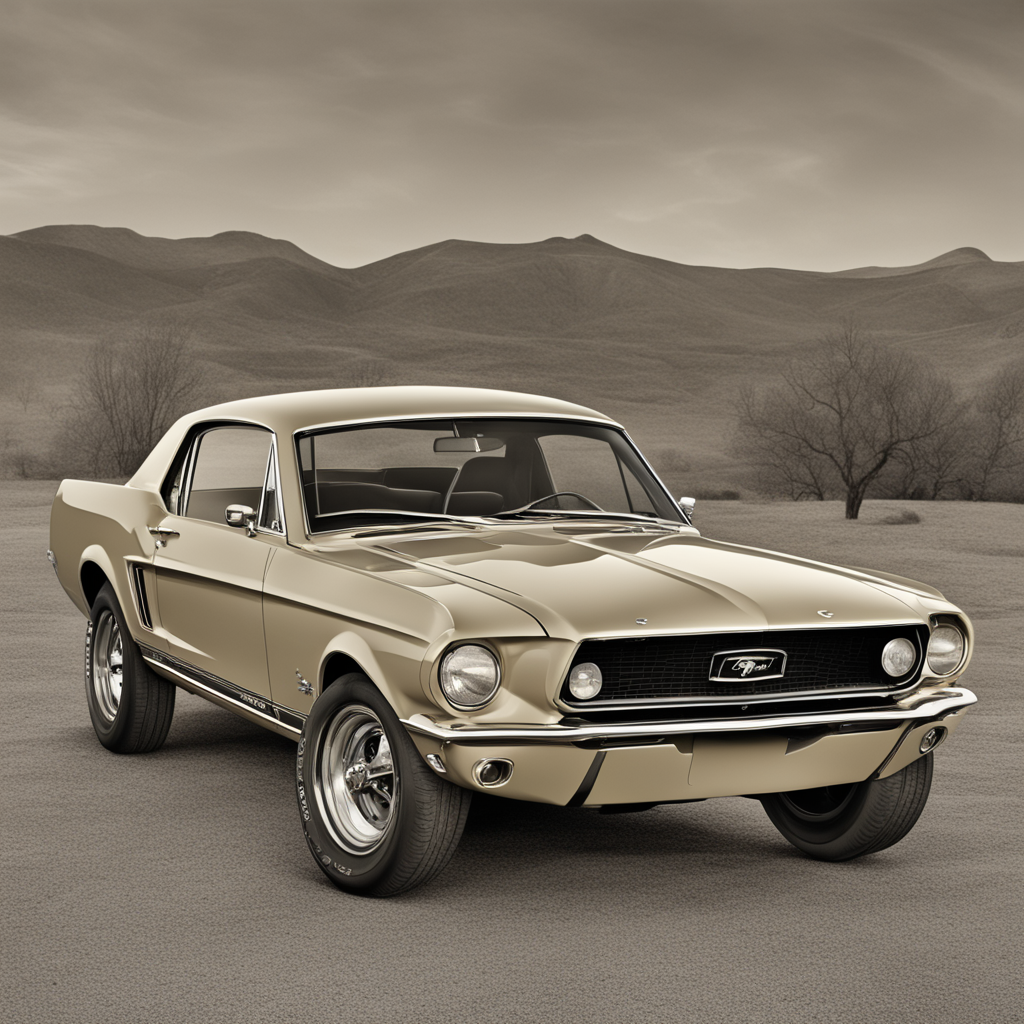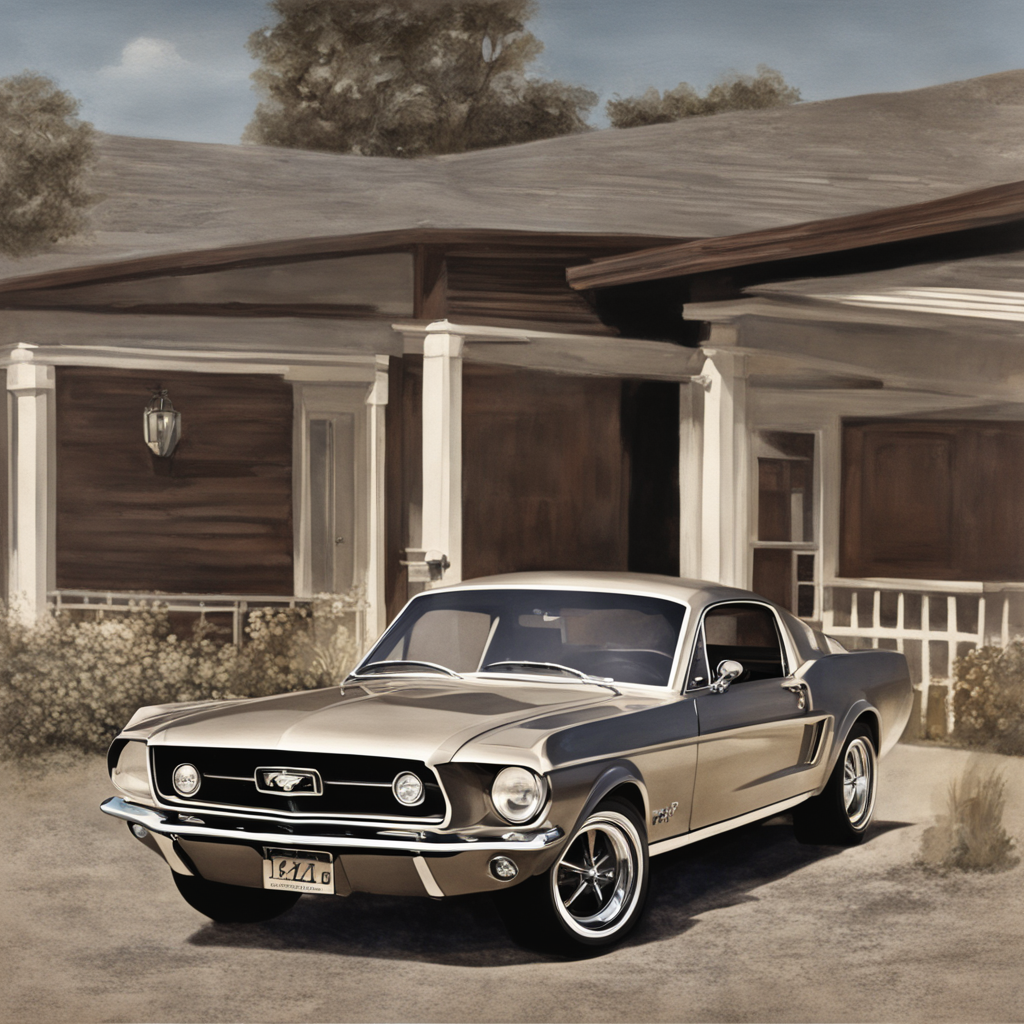The Birth of a Classic: Unpacking the Significance and Features of the ‘67 Mustang
In this article, we’ll delve into the history, design, performance, and significance of the iconic 1967 Ford Mustang. Whether you’re a seasoned collector or just starting your automotive journey, this piece aims to provide an in-depth look at one of America’s most beloved muscle cars.
Updated October 14, 2023
Brief History of the 1967 Ford Mustang
The Mustang has become synonymous with American muscle, and the 1967 model year marked a significant milestone. The ‘67 Mustang was the third generation of the iconic car, following the original 1964-1965 models and the 1966 fastback. The ‘67 Mustang boasted a longer wheelbase, improved suspension, and styling cues that would define the muscle car era.

Significance of the 1967 Ford Mustan
The 1967 Mustang played a crucial role in the development of the American muscle car scene. Its bold design, impressive performance capabilities, and affordable price point made it an instant hit with enthusiasts. The ‘67 Mustang also marked a turning point for Ford, as the company shifted its focus from the compact Mustang to a more powerful, aggressive, and desirable vehicle.
Design and Styling of 1967 Ford Mustang
The 1967 Mustang’s design was a masterclass in blending elegance with aggression. The car featured a longer, wider body than its predecessors, with a sloping fastback roofline that became an iconic feature. The front end boasted a distinctive grille and quad headlights, while the rear received a new taillight design and a more prominent spoiler.
Color Options and Trim Levels
The 1967 Mustang was available in a range of colors, including:
- Classic Red
- Wimbledon White
- Tropic Tan
- Ivy Green
- Meadowlark Yellow
- Gunmetal Gray
- Sauterne Gold
Trim levels included the base model, GT, and Shelby GT350/GT500.
Performance and Specifications
The 1967 Mustang offered a range of engine options:
- 200 cubic-inch inline-six (104 horsepower)
- 289 cubic-inch V8 (2-barrel carburetor, 225 horsepower)
- 289 cubic-inch V8 (4-barrel carburetor, 271 horsepower)
- 390 cubic-inch V8 (2-barrel carburetor, 265 horsepower)
- 390 cubic-inch V8 (4-barrel carburetor, 335 horsepower)
Transmission options included a standard 3-speed automatic or a manual 4-speed.
Engine Options for the 1967 Ford Mustang
The ‘67 Mustang was available with two main engine options:
- The base model received a 200 cubic-inch inline-six engine producing 104 horsepower.
- The GT and high-performance models featured various V8 engines, including the 289 cubic-inch (225-271 horsepower) and the 390 cubic-inch (265-335 horsepower).
Horsepower and Torque Ratings for the 1967 Ford Mustang
The ‘67 Mustang’s engine options yielded the following performance ratings:
- 200 I6: 104 horsepower @ 4400 rpm, 205 lb-ft torque
- 289 V8 (2-barrel): 225 horsepower @ 4600 rpm, 282 lb-ft torque
- 289 V8 (4-barrel): 271 horsepower @ 5600 rpm, 313 lb-ft torque
- 390 V8 (2-barrel): 265 horsepower @ 4400 rpm, 345 lb-ft torque
- 390 V8 (4-barrel): 335 horsepower @ 5400 rpm, 405 lb-ft torque
Transmission Options

The ‘67 Mustang was available with two transmission options:
- A standard 3-speed automatic
- A manual 4-speed
Variants and Special Editions
The 1967 Mustang included several special editions and variants:
- Fastback: A sporty, pillarless design that became an iconic feature.
- Convertible: A soft-top option for those who preferred the open-air experience.
- Coupe: A fixed-roof model with a sleek profile.
GT Equipment Package
The ‘67 Mustang GT featured a range of performance upgrades, including:
- A 289 cubic-inch V8 engine
- A high-performance suspension
- Unique badging and styling cues
- A limited-slip differential
Impact on the Automotive Industry
The ‘67 Mustang had a profound impact on the automotive industry. Its bold design, impressive performance capabilities, and affordable price point made it an instant hit with enthusiasts. The car’s success spawned a wave of muscle cars from rival manufacturers, cementing its place in American automotive history.
Sales Figures and Popularity
The 1967 Mustang was a massive commercial success, with over 418,000 units sold worldwide.
Influence on Competitor Models
The ‘67 Mustang’s influence can be seen in the designs and performance capabilities of rival muscle cars, such as:
- The Chevrolet Camaro
- The Dodge Charger
- The Pontiac GTO
Collectibility and Value of the 1967 Ford Mustang
The ‘67 Mustang is highly collectible and valuable due to its iconic status, rarity, and historical significance. Prices vary depending on condition, originality, and variant:
- Base models: $15,000-$30,000
- GT models: $25,000-$50,000
- Shelby GT350/GT500: $100,000-$200,000
Buying Guide
When purchasing a 1967 Ford Mustang, look for the following:
- Originality and authenticity
- Condition and maintenance history
- Engine and transmission performance
- Bodywork and rust-free status
- Trim level and features (e.g., GT Package)
Conclusion: The 1967 Ford Mustang is an iconic muscle car that has left an indelible mark on the automotive industry. With its bold design, impressive performance capabilities, and affordability, it’s no wonder this model year remains a beloved classic among collectors and enthusiasts alike. Whether you’re looking to purchase or simply appreciate the ‘67 Mustang, this article provides a comprehensive guide to understanding the significance, features, and value of this iconic American muscle car.

